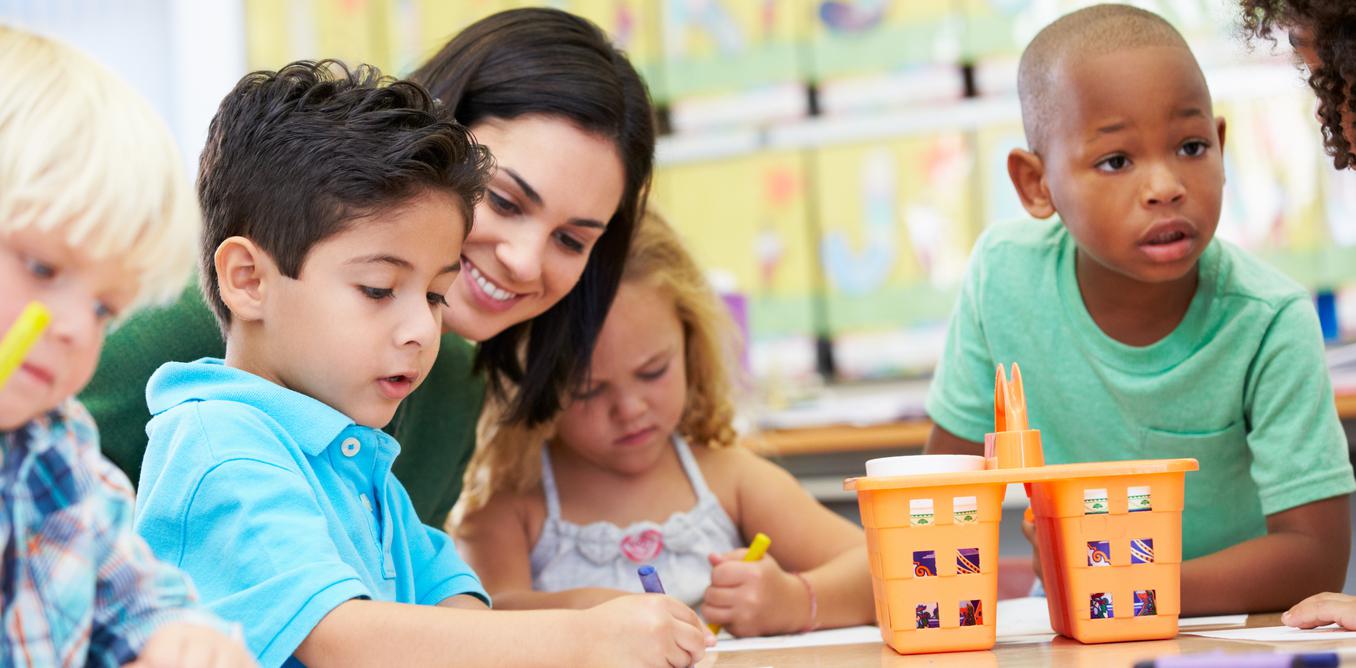Why Is Art So Important In Early Education?
Art is incredibly important for people of all ages. Through art we can express our thoughts, feelings, ideas and emotions, all the while stimulating our brain and nourishing our soul.

Art is especially crucial for young children in the first years of their life, as it encourages creative development and helps them to understand the world around them. According to Art and Creative Development for Young Children, art is not only fun but is mentally engaging as it teaches children how symbols can communicate ideas and have meanings.
In order for a young to the child to grow and develop to their full potential, their artistic curiosity must be fostered and encouraged. Here are 4 important reasons why art is so important in early education.
Art allows for expression and fosters creativity
When a child is young it is important to do everything you can, as a parent, caregiver or teacher, to foster their creativity and expression. This is why child care art programs are integral to a child’s development, as they are allowed to be experimentation, inventive, imaginative and crafty with shapes, colours and art utensils.
Through art, children learn new ways of thinking and begin to develop their own unique individuality. By picking up a paintbrush and swooping different colours freely over a page and creating shapes and dimensions (and making a mess), they are discovering themselves and what they can create.
As a parent, teacher or caregiver, you can inspire creativity in your young child by:
Let them go in their own direction
Try to avoid steering the processor directing your child when they’re creating something new. Let go, and allow them to move in any course they feel like. This will encourage them to explore new things that they haven’t experienced before, which will boost their self-esteem.
Encourage discussion about their art
Get your child critical thinking by asking them about what they are doing. Children are very in the present moment and are not necessarily aware of what they are creating - they just do what feels right. To encourage a connection between what they are creating with their hands, and what they are thinking and feeling, be sure to acknowledge what they are doing, and ask them about it.
For example, if your child is using a lot of blue paint you could say “I can see that you are using a lot of blue. Why is that, do you think? What does blue mean to you?”
Acknowledging their art and asking questions about it will provoke their consciousness and develop their cognitive thinking and creativity.
Imitate them
To show support and encourage imagination, you should imitate your child’s artwork. If they are painting a lot of circles, for example, you should create a lot of circles too. This will boost their confidence and self-esteem, and encourage them to continue painting.
Focus on the process rather than the finished product
For a young child to benefit from art, the outcome of their exploration and creativity is not important; it doesn’t matter. What does matter, however, is the journey they go on and what they learn from it.
2. Art stimulates the brain and aids intellect
By encouraging art and fostering creativity, you are increasing your child’s brain function. Taking part in the artistic activity and being exposed to new ideas stimulates and strengthens both sides of the brain. This is because they are learning about new colours, shapes, movements, etc., which increases their neural connections.
Art enriches a child’s intellect because it improves attention span, concentration and memory. It also increases a child’s vocabulary and reading skills, as well as their mathematical and science ability.
Benefits of art on the brain
Fine motor skills -
Art stimulates and strengthens a child’s fine motor skills because they learn how to hold and manipulate different art utensils, such as paintbrushes, pencils, pens, crayons, chalk and more. This skill is crucial for a young child to grasp because it will help them when it comes to writing, dressing themselves, doing their shoelaces and other intricate movements.
Cognitive development -
Art encourages cognitive development because it forces a child to consider cause and effect of their movements. By playing freely with paint and paintbrushes they will soon learn that the different ways they hold the brush and the different pressures they apply to the paper results in different outcomes. This then requires forward thinking and mental planning, and they will begin to critique their own actions. Later on, as work and study becomes more difficult, students will need quick custom essay advice.
Language skills -
Throughout their early years, a child’s language skills are constantly developing. Art can strengthen language and award a child with more vocabulary, especially when they are asked to discuss their work and critique their process. For example, they will learn the names of colours, materials, shapes, etc.
Mathematical skills -
Through art, children learn about shapes, sizes, space and counting, which translates into better mathematical ability, and will give them a head start in schooling.
Science skills -
Art teaches children basic science skills, such as when they mix two colours together, they will get another completely different colour. Or, when they juxtapose one material with another, they will experience new results.
3. Art improves social and emotional skills
Through art, a child’s brain is maturing in many ways. Art increases a child’s social and emotional awareness, causing them to develop mentally, gain confidence and become better communicators.
Art classes are crucial for emotional and social development because it gives children a chance to cooperate and interact with other children their own age, as well as adults.
Children will also learn patience and persistence through art, which means they will not only improve their artistic skills but will become kinder and more compassionate.
4. Art is fun!
One of the most important reasons why your child should be exposed to art is because it’s fun! It allows them to indulge in their curiosity, explore new concepts and express themselves in new ways.
Encouraging a child to experiment with art in an organic way will feed their souls and nourish their minds, and will also be hugely beneficial for their educational learning.

